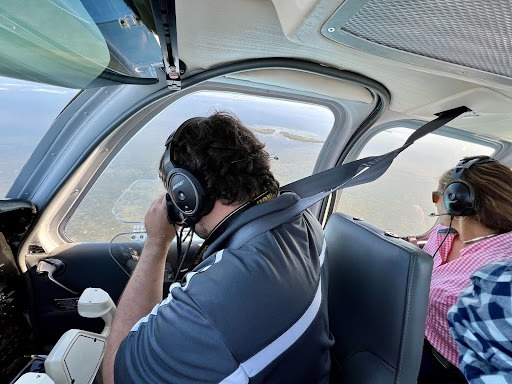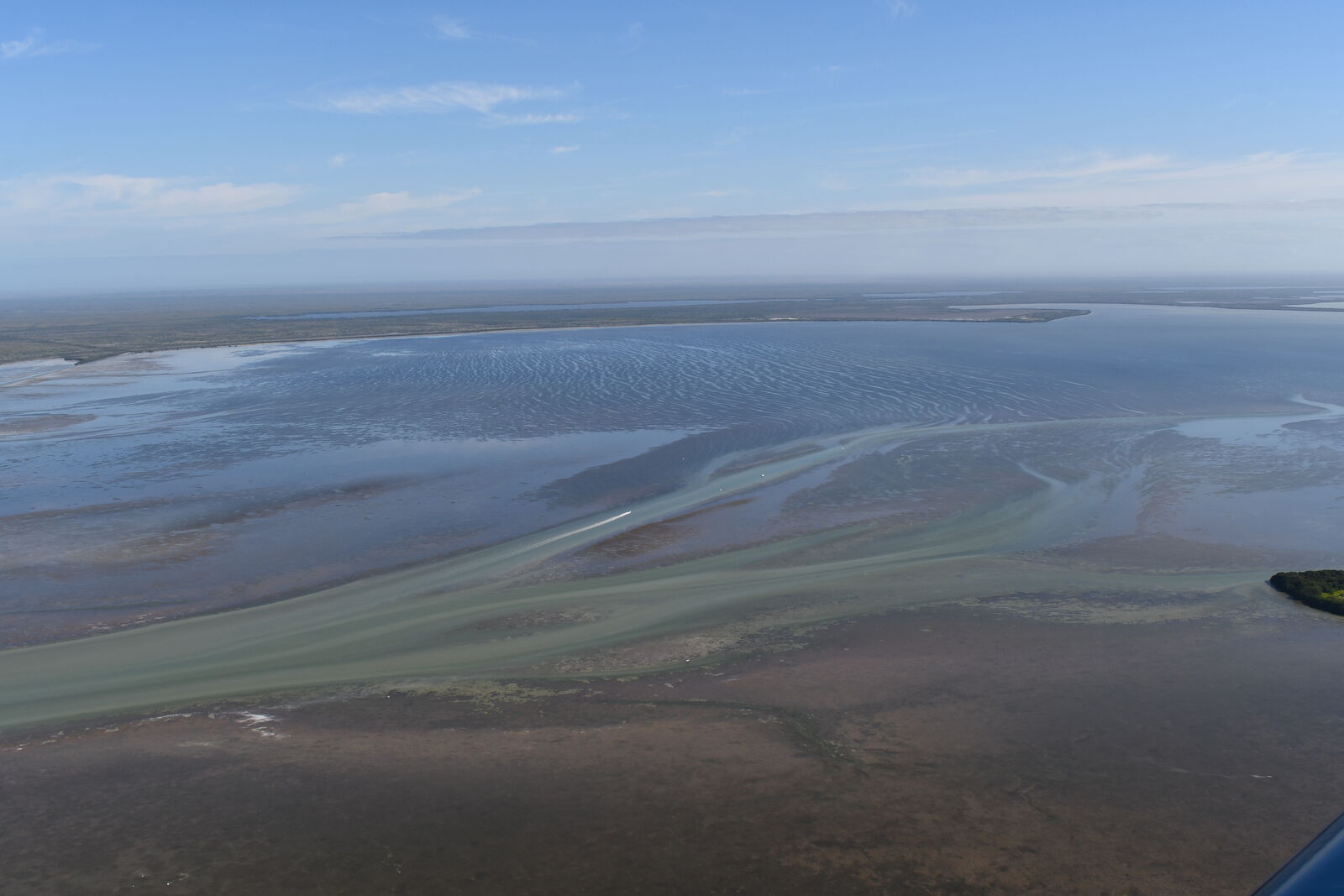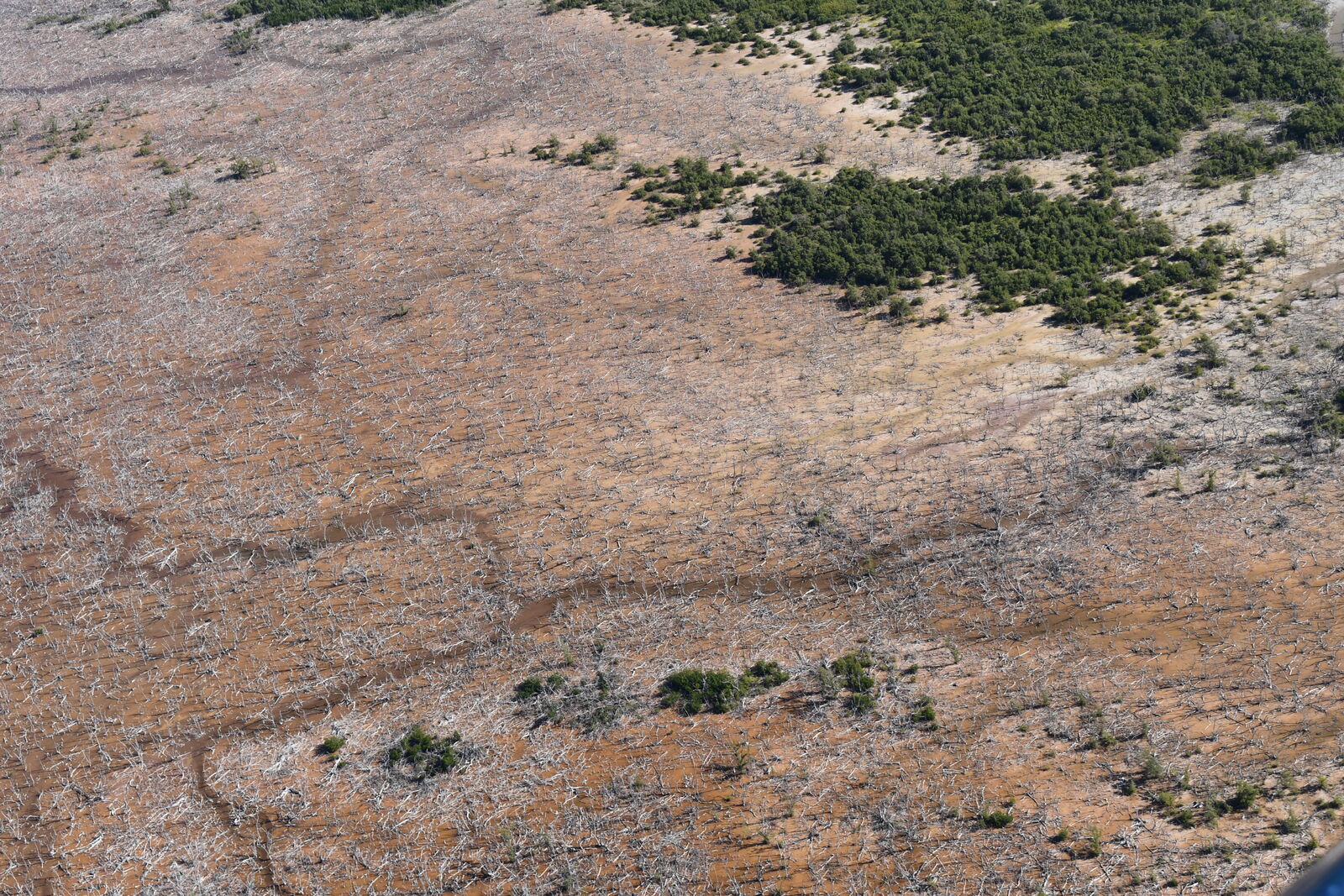
Researchers from Florida International University assessed portions of Florida Bay during the flight on 8 February. Jay Apt/LightHawk.
LightHawk staff were contacted in early this year by Florida International University researchers looking to better understand the larger Florida Bay region. Over the past century, Florida Bay has experienced a number of disturbances that have significantly changed the ecosystem structure. In particular, the loss of seagrass coupled with strong storms has led to a shift from a clear water state to one dominated by sediment plumes and algal blooms.
There is a current effort to understand the drivers of these persistent algal blooms, which increase in intensity and size after storm events. A historic rain event took place over south Florida on November 15, 2023. To capture how this rain event impacts algal blooms in Florida Bay, water quality field sampling was performed. This field sampling will be combined with visual surveys of the extent and intensity of the bloom due to this event, over the north central part of Florida Bay.
This flight collected invaluable imagery and video footage to relate potential drivers of nutrient influx to algal blooms within this area as well as providing needed context of potential water inputs into the bay. This information will be used in an ongoing study funded by Everglades National Park and South Florida Water Management District to help relate variables within a time series analysis, which in turn will be used to determine the sources of nutrients driving algal blooms.

Snake Bight at low tide showing water flow throughout northcentral Florida Bay. Photo by Jonathan Rodemann.
During this flight, multiple areas within the southwestern portion of Florida Bay were viewed and photographed by researchers. They were not disappointed by the views of the region, “The flight was amazing and so useful for our research. It is just so useful to have a landscape perspective of an environmental problem we are trying to fix. I think seeing a process from the air influences the way we think about the problem, the scale and connectivity and is just invaluable. We are so grateful for this opportunity. Pilot Jay was amazing and so kind! Thank you so much for this.” – Professor, Jennifer Rehage.
Post Doc Jonathan Rodemann added, “As scientists, it is crucial to understand your system as a whole in order to make conclusions about specific parts of that system. In this flight, we were trying to accomplish just that: identifying potential sources of nutrients contributing to algal blooms in Florida Bay by looking at the entire coastal ecosystem. Through LightHawk, we were able to visualize the sheer connectivity of this system and better conceptualize how seemingly unrelated things such as dead mangroves on land and algae in the water column may be interacting. The information gained through this flight will lead to better hypothesis generation to answer the question “What is causing the algal blooms in Florida Bay?”
Special thanks go out to pilot Jay Apt who provided the opportunity for Jonathan and Jennifer to experience the flight and capture important photos and video for their ongoing research.

Creek leading out of dead mangrove zone, illustrating possible nutrient mobilization into Florida Bay. Photo by Jonathan Rodemann.
